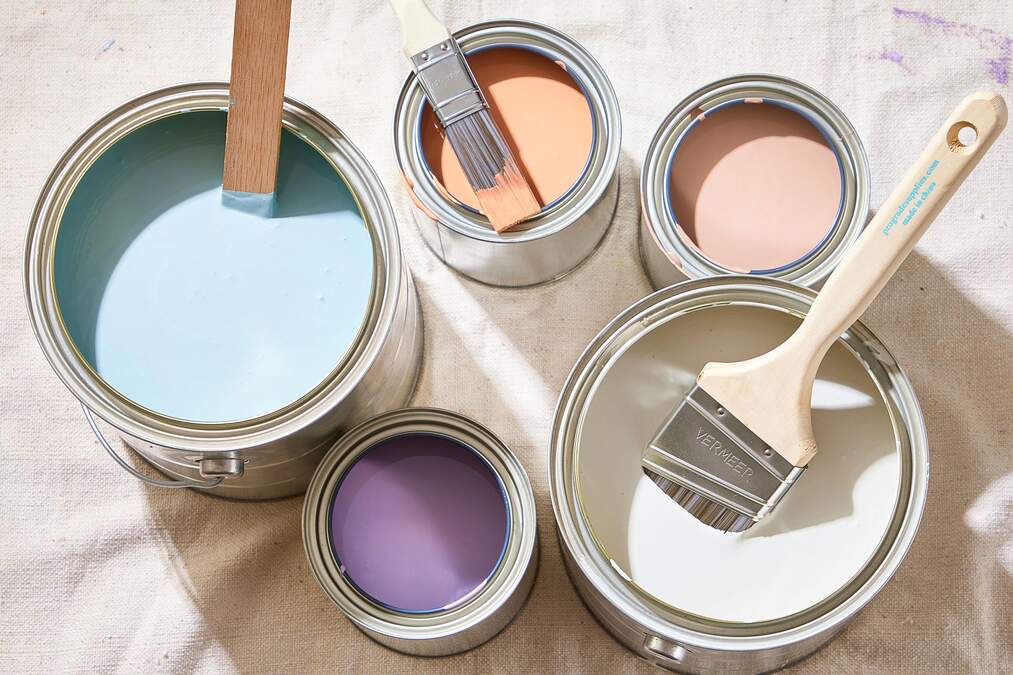
Eco-friendly Methods to Refinish Bathroom Cabinets
Have you ever looked at your bathroom cabinets and wished they could catch a break? You’re not alone. The cost and environmental worries of replacements can put a damper on your plans.
But fear not, because the world of eco-friendly bathroom remodeling is here to save the day – and the environment too. In a world where being eco-smart is the new cool, even home upgrades are getting a sustainable twist.
That’s where the beauty of eco-friendly refinishing shines. Imagine transforming your bathroom while giving a nod to the planet’s well-being. Sounds like a win-win, right?
Join us in this blog adventure as we unravel the secrets of giving your cabinets a makeover in an eco-friendly way. From crafty techniques to mindful material use, we’ve got you covered. Let’s dive in and prove that having a stylish bathroom and being kind to the Earth can go hand in hand.
Why Choose Eco-Friendly Methods?
Choosing eco-friendly methods and practices is essential for a variety of reasons, all of which contribute to the well-being of the planet, its inhabitants, and future generations. Here are some compelling reasons to choose eco-friendly methods:
Environmental Conservation
Eco-friendly methods prioritize the preservation of natural resources and ecosystems. By using sustainable practices, we can help reduce deforestation, habitat destruction, and pollution, leading to healthier and more balanced ecosystems.
Resource Efficiency
Eco-friendly practices encourage efficient use of resources like water, energy, and raw materials. This not only helps to reduce waste but also lowers the overall demand for these resources, promoting their availability for future generations.
Waste Reduction
Eco-friendly practices often involve reducing, reusing, and recycling materials. This helps minimize the amount of waste sent to landfills and decreases the overall environmental impact of waste disposal.
Economic Benefits
While there might be some initial costs associated with adopting eco-friendly methods, they often lead to long-term economic benefits. For example, using energy-efficient appliances and technologies can lower utility bills over time.
Preparing Your Bathroom Cabinets for Refinishing

Refinishing bathroom cabinets is a great way to give your bathroom a fresh and updated look without the expense of completely replacing the cabinets. Here’s a step-by-step guide to preparing your bathroom cabinets for refinishing:
Clear Out the Cabinets
Empty the cabinets of all items, including toiletries, cleaning supplies, and any other belongings. This will give you a clear workspace and prevent any items from getting damaged during the refinishing process.
Remove Cabinet Doors and Hardware
Use a screwdriver to remove the cabinet doors from their hinges. Keep track of the screws and hardware, as you’ll need them for reassembly.
Remove any knobs, handles, or pulls from both the doors and the cabinet frames. This will make it easier to work on the surfaces and ensure an even finish.
Remove Dust
After sanding, it’s important to remove all the sanding dust. Use a tack cloth or a damp cloth to wipe down the surfaces, ensuring that no dust particles remain.
Fill Holes and Imperfections
Inspect the cabinets for any holes, dents, or imperfections. Fill these areas with wood filler, and then sand them smooth once the filler is dry. This will create a seamless and uniform surface.
Test Stains or Paints
If you’re staining the cabinets, test the stain on a hidden area to ensure you’re happy with the color. Similarly, if you’re painting, you might want to test a small area with the chosen paint color to confirm your preference.
Alternatives to Sanding
Sanding is often used to prep surfaces for painting or refinishing by creating a smooth and porous surface for better adhesion. Here are some alternatives:
Deglossing Solution
Instead of sanding, you can use a deglossing solution or liquid sandpaper. These products chemically break down the gloss or finish on the surface, making it more receptive to paint or stain. They are especially useful for glossy surfaces.
Wire Wool or Steel Wool
Fine-grade wire wool or steel wool can be used to gently scuff up the surface and remove some of the sheen. This can work well for smaller areas or surfaces that don’t require heavy sanding.
Power Sanding Tools
Power tools like oscillating sanders, orbital sanders, or detail sanders can speed up the sanding process and make it less physically demanding. These tools come with various grits of sandpaper suitable for different levels of surface preparation.
Scraping
For certain surfaces, especially ones with peeling paint or loose finish, gentle scraping with a putty knife or scraper can remove loose material and create a slightly textured surface suitable for painting.
Choosing the Right Paint

Choosing the right paint is crucial for achieving a successful and long-lasting bathroom cabinet refinishing. Whether you’re painting walls, furniture, cabinets, or other surfaces, there are several factors to consider when selecting the appropriate paint. Here’s a guide to help you make the right choice:
Surface Type
Consider the type of surface you’ll be painting. Different surfaces, such as wood, metal, drywall, or plastic, may require specific types of paint to adhere properly.
Paint Types
Oil-Based Paint: Oil-based paints provide a durable and smooth finish, making them suitable for trim, cabinets, and furniture. However, they have a stronger odor, longer drying time, and require mineral spirits for cleanup.
Acrylic Paint: Acrylic paints are versatile and can be used on various surfaces, including wood, canvas, and ceramics. They dry quickly and are available in a range of finishes.
Spray Paint: Spray paints are convenient for small projects and hard-to-reach areas. They come in a variety of finishes and colors.
Interior vs. Exterior Use
Determine whether the paint will be used indoors or outdoors. Exterior paints are formulated to withstand the elements and UV exposure, while interior paints prioritize factors like ease of cleaning and indoor air quality.
Primer
Depending on the surface and the type of paint you’re using, you may need a primer. Primers improve adhesion, coverage, and the overall finish of your paint job. Try to hire professional cabinet painters for the best results.
Water-Based Stains
Water-based stains are wood colorants that utilize water as a solvent instead of traditional chemicals. These stains incorporate pigments or dyes to impart color to wood surfaces. Notable for their low levels of volatile organic compounds (VOCs), they dry quickly and can be cleaned up easily with water. These characteristics make water-based stains both environmentally friendly and user-friendly, making them a popular choice for various wood projects.
Eco-Friendly Bathroom Fixtures
Eco-friendly bathroom fixtures are designed to minimize water and energy consumption while maintaining functionality and style. These fixtures play a significant role in reducing your environmental footprint and conserving precious resources. Here are some examples of eco-friendly bathroom fixtures for cabinet refinishing massachusetts:
- Low-Flow Toilets: Low-flow toilets use significantly less water per flush compared to traditional toilets. You can choose between a lighter and heavier flush depending on the type of waste you are flushing.
- Water-Efficient Faucets: Water-efficient faucets have aerators that mix air with the water flow, reducing water consumption without compromising water pressure. They can cut water usage by up to 30% or more.
- Smart Thermostatic Shower Systems: These systems allow you to pre-set water temperature, helping to prevent water wastage while waiting for the shower to heat up. Some models even pause the water flow once it reaches the desired temperature.
Common Mistakes to Avoid
- Skipping Proper Surface Preparation: Failing to clean, sand, and prime the cabinets adequately can lead to poor adhesion and a subpar finish.
- Ignoring Ventilation: Refinishing in a poorly ventilated area can expose you to fumes and affect indoor air quality.
- Using Incorrect Tools: Using low-quality brushes or rollers can result in streaks, brush marks, or uneven coverage.
Benefits of Hiring a Professional Cabinet Painting Service

Hiring a professional cabinet painting service offers several benefits that can make the process smoother, and more efficient, and ultimately lead to a high-quality finish. Here are some advantages of opting for professional assistance:
Expertise and Experience: Professional painters have the knowledge and experience to properly prepare surfaces, apply paints or stains, and achieve a flawless finish. Their expertise ensures that the final result looks professional and lasts longer.
Proper Preparation: Properly preparing cabinets is crucial for a lasting finish. Professionals ensure that cabinets are properly cleaned, sanded, and primed before applying paint or stain.
Access to Quality Products: Professional painters have access to high-quality paints, stains, and finishes that might not be readily available to the general public. This can result in a more durable and aesthetically pleasing outcome.
Conclusion
Incorporating eco-friendly methods to refinish bathroom cabinets not only revitalizes the aesthetic appeal of your space but also contributes to a sustainable future. Professional Painters in Rhode Island suggest opting for low-VOC paints, water-based finishes, and reclaimed materials to minimize harmful environmental impacts and indoor air pollution. Professional Painters in Connecticut highlight that embracing these techniques showcases a responsible approach to home improvement, demonstrating that style and eco-consciousness can seamlessly coexist. Professional Painters in Massachusetts emphasize that through these choices, we take significant steps towards preserving natural resources and fostering a healthier living environment for ourselves and generations to come.






